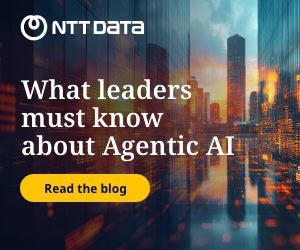With the rise of new technologies such as AI and digital twins, a cultural shift in the workplace is needed to adapt.
Fostering collaboration between humans and machines helps organisations maximise the value of new technologies. When done well, emerging technologies significantly help bridge the gap between engineers, data scientists, and operators, enhancing productivity, efficiency, and collaboration.

Alberto Iniesta, Worley Consulting's director of digital twin offerings across EMEA and the Asia Pacific region (APAC), discusses how digital technologies are revolutionising project delivery and how the workforce is adapting to these changes.
Revolutionising project delivery
For Iniesta, his role in strategy development, client account management and growth, project delivery, team leadership, and P&L oversight at Worley made him realise that new technologies are changing how people work.
"I would say that there are many things that are changing currently in how we execute our projects. And that spans engineering, supply chain, construction, and completions. Engineers are currently working more effectively through data-centric ways of working. They can correlate information across different disciplines… overall, make sure that there are fewer errors and better coordination across the different main areas participating in a project."
Digital twins, for example, now help contextualise data and provide access to information across different databases and repositories.
This shift is also improving how teams use information throughout a project.
"And personnel can access it just with one click. The management of data-centric information allows them to find information not just during engineering but also during operations. Information from maintenance, from asset integrity, and from real-time datasets. I think that's one of the benefits that the industry is gaining," Iniesta added.
Adapting to new technologies
Despite the excitement around digital transformation, Iniesta emphasises that fundamentals still matter.
He posits that it remains imperative to have a solid foundation in engineering principles.
"We need to think about how they can leverage technology to go to the next level in terms of efficiency. But we shouldn't forget that engineering principles and a strong understanding of the industry are primary. And it will continue to be."
Beyond foundational principles, he reiterates that attitude plays a significant role in adapting to new technologies.
"I have seen along my career that attitude is more important than aptitude." Alberto Iniesta
"I have seen along my career that attitude is more important than aptitude. In some cases, when someone comes to my team who they not have that much experience, I'm expecting them to go a step ahead, have some level of curiosity, some level of necessity to understand why things work and how things work."
Overcoming barriers
Even with advanced technologies available, one thing remains constant: people. Iniesta believes that the most significant barrier to adopting technology is not the tools themselves, but how people accept and adapt to them. People are not just users of technology; they are the heart of its successful adoption.
Iniesta believes the most significant barrier in adopting technology is not the tools themselves but how people accept and adapt to them.
"What I think is failing somehow is to really make the people participate in those transitions," Iniesta said.
He added that companies can address this by "taking people at the centre" and helping them understand how they will be using technology.
He also underscores the importance of mapping the processes they typically follow and how they complete them as part of a company's decision-making process.
Fostering collaboration
Once individuals understand the value of technology, the next step is ensuring teams collaborate effectively.
"Digital twins are a clear example, because you integrate data that comes from IT, OT, and ET, and reference data sets. And you bring all the data into" context and surface all the knowledge that exists within a client operating company, the Worley executive said.
"Then the different stakeholders that contribute to the company decisions can coordinate with each other, and of course, they can make the overall collaboration much more effective than it used to be many years ago."
From hands-on engineering to digital strategy
As roles evolve, the question becomes: how can organisations help today's workforce bridge this transition?
Iniesta posits that they should cultivate curiosity and the excitement to learn more.
He said that engineers nowadays face higher expectations to work more efficiently, deliver projects faster, and achieve zero errors.
"As you move from engineering to procurement, you need to make sure that you are compliant with your designs and that you are bringing those effectively. Engineers are leveraging data-centric ways of working at the current moment.
"You have people from process, instrumentation, civil, electrical, and they are all able to work in a fully integrated manner, and coordinating every change that may happen as part of a design. They no longer need to manage or update documents when changes occur across multiple documents. They can basically use data-centric ways of working and get into much higher levels of efficiency in terms of the work that they do."
Iniesta said curiosity was also key in his own career progression.
"I think we were talking about people being curious, and people being proactive in the things that they do, and I think that's fundamental. In my case, I was coming from a technical background and at some point in my career, I had the opportunity to transition to digital," he said
Iniesta added that he found his personal transition a perfect opportunity that could positively impact his growth 20 years down the line.
"That was just because I was curious, and I wanted to learn more," he added.
To make an impact in the workplace during the transition from hands-on engineering to digital, he advises others to foster three abilities: "learning, adapting, and interacting with others and understanding different points of view."
"It's what makes us really different and makes an impact," he concluded.
"Learning, adapting, and interacting with others and understanding different points of view. It's what makes us really different and makes an impact," Alberto Iniesta
Human–digital collaboration
Ultimately, the goal is not to replace people but to strengthen how humans and technologies work together.
All new technologies, when adopted, require some adjustment time. However, with the right skill sets and attitude, companies can maximise their tech investments while ensuring that humans and machines work together.





